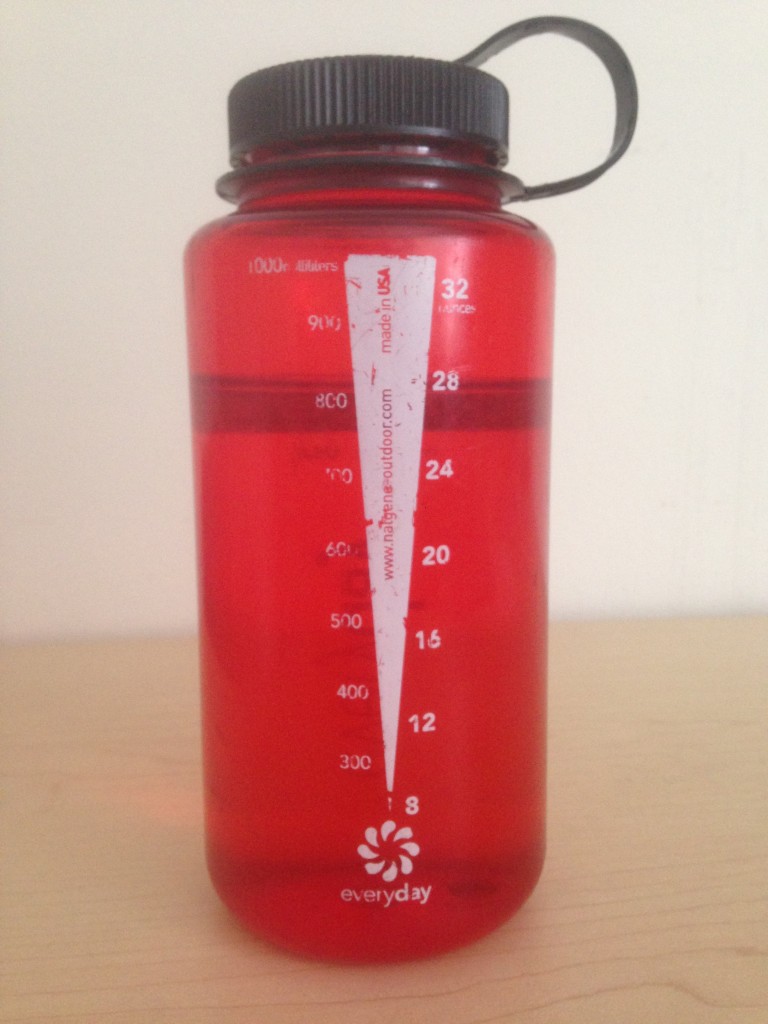Chefs Justine and Esteban spend their days asking  what’s happening to good food. They rail against the loss of seasonality, foodies who treat food as too precious, and taste buds that don’t remember simple, elegant flavors.
what’s happening to good food. They rail against the loss of seasonality, foodies who treat food as too precious, and taste buds that don’t remember simple, elegant flavors.
Last week, I overheard two young women talking through the stalls in the women’s room on a local college campus. One said to the other how important it was to stay hydrated, that it was “really good to drink lots of water—really, lots.” When they came out, they continued their conversation. The hydrated woman said that she now carries a Camelbak and fills it four times a day between classes. The other said, “Wow. That’s a lot of water,” but the first woman assured her that she needed to be “extremely hydrated.”
When I left the women’s room, I told Esteban the story, which got us thinking about this craze of carrying water with us all the time in the form of plastic bottles, Nalgenes, and thermoses in ever-increasing sizes, to the point that this young woman believes she needs to drink, almost steadily, from a pack on her back, even though she’s sitting for most of the day in a classroom.
What’s going on? We understand the need to drink lots of water if you’re a desert marathoner, but seriously, what’s with this near desperation to carry water with us wherever we go?
Think about this young woman—an extreme, for sure—and the fact that a normal Camelbak carries 1.5 liters, or the equivalent of about 1.5 quarts. Drinking four of them a day is about a gallon and a half. That’s insane for someone living in a cold climate and leading a rather sedentary life.
The old advice was to drink eight glasses of water a day (about two quarts). But according to the Mayo Clinic, that depends on your activity. For example, if you sweat, breastfeed, or have a fever, you might want to increase your water intake; or, if you’re not doing those things, you might even decrease it. Here’s the clue that you’re properly hydrated: your urine is light yellow. If it’s too dark, drink more. The Mayo Clinic website also notes that there are numerous other ways to ingest liquid. Vegetables and fruits are almost 90% water. Coffee, tea, juice, and beer are also choices. Maybe they’re not the best ones, but they hydrate. Sure, water is probably the best option if you’re aiming for inexpensive, tasteless, and calorie-free, but we want to point out that other things contribute to your two quarts a day.
Now let’s talk about what happens to all the excess water we’re drinking. Where does it go? You guessed it: right down the toilet. Humans are not camels. We can’t store too much water, so when we drink too much, we pee it right out. Here’s the thing: old toilets in old buildings use up to seven gallons of water per flush. Newer ones are required by law to use 1.6 gallons. Think about this for a second, and return to the young woman in the stall. This overly hydrated student is drinking a gallon and a half of water a day—just water—not to mention coffee, fruit, and vegetables. Then she pees out about two-and-a-half cups of urine each time and flushes it down with up to seven gallons of potable water. She does this all day long (and probably all night, too!) and, like millions of other crazy Americans, wastes tanks of water by over-drinking and then flushing.
What gives? Why do we think we need to drink water every five seconds? It’s time for us to step back and re-evaluate. Do we really think we’re going to dehydrate between breakfast and lunch? The fact is that we’re going to make it, just like saner generations did before us, the ones who toiled in the field all day and then drank sparingly from a ladle.










